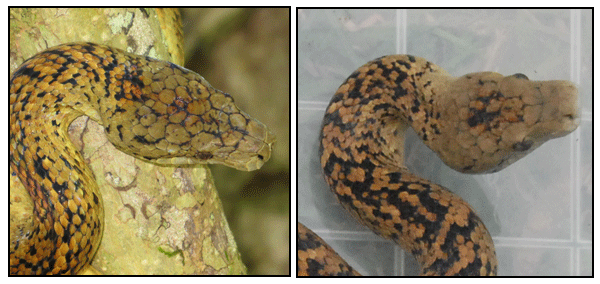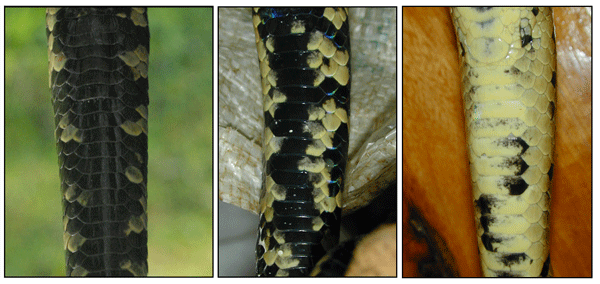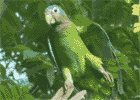 |
 |
Although every Jamaican Boa has a unique colouration pattern, this changes subtly over time. In order to identify all boas that we encounter and to determine growth rates and life span for those animals which we are lucky enough to re-encounter, we inject a very small microchip under the skin, on the left side of the boa's body about 5 cm in front of the vent.
The microchips, which are 11.5 mm long -- slightly larger than a grain of rice --, are called Passive Implantable Transponders (PIT). The PIT tags do not actively emit any kind of signal. Rather, we use a separate hand-helder "reader" which wirelessly queries the transponder with radio waves and the coding of the microchip is communicated back to the reader. The range of our reader is less than 10 cm . . . this means, we have to have the boa in-hand in order to identify it by its PIT.
 |
Once a boa is PIT-tagged and released back into the wild, the only way we will ever find it is by dumb luck (but perhaps with a little knowledge that boas like to re-visit favourite spots within their home range) -- we can't actively search for a wild boa with a PIT-tag reader.
PIT tags can be contrasted to "active" radio- and satellite- wildlife tags, where the tag, itself, produces a signal at a pulse-rate (e.g., 1 pulse per second) set by the manufacturer. When a receiver is tuned-in to the wave frequency of the tag, the animal can be tracked: we can actively search and find it. "Active" tags are powered by batteries, either non-rechargeable lithum or rechargeable solar. When the battery dies, the transmitter dies -- no further signals are emitted --, and we can no longer "actively" locate the tag.
We would like to thank Dr. Michel C. Milinkovitch for donating the Trovan Reader and Trovan ID-100B RFID transponders.
Please email us if you'd like more information about our PIT-tagging efforts.

